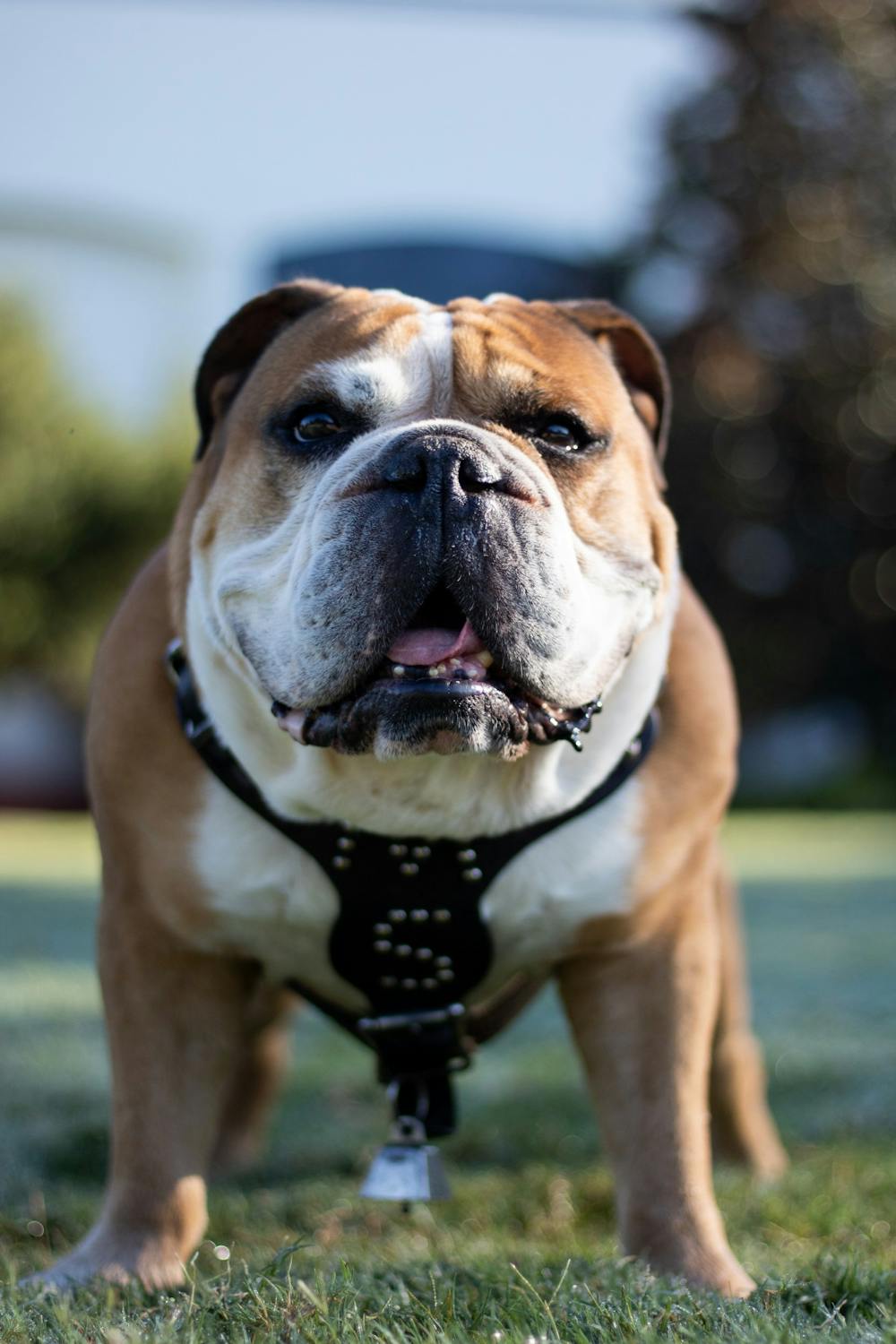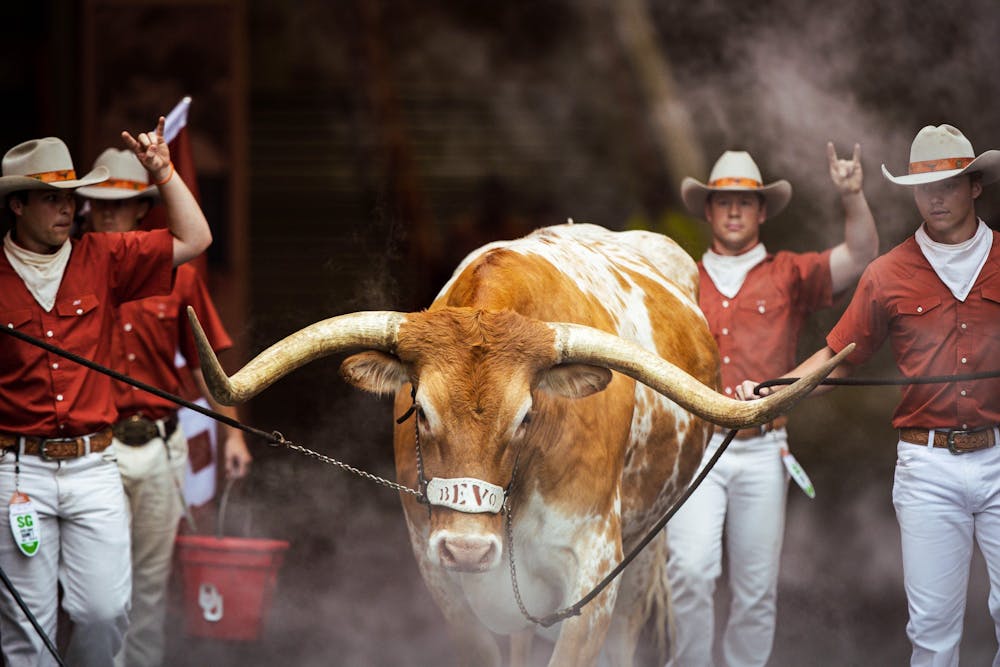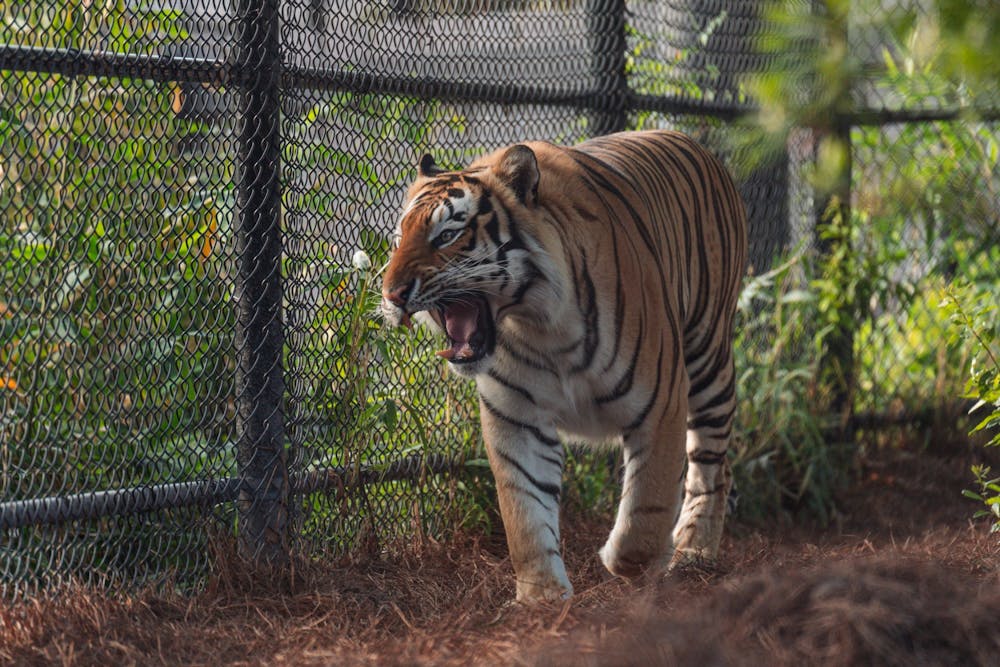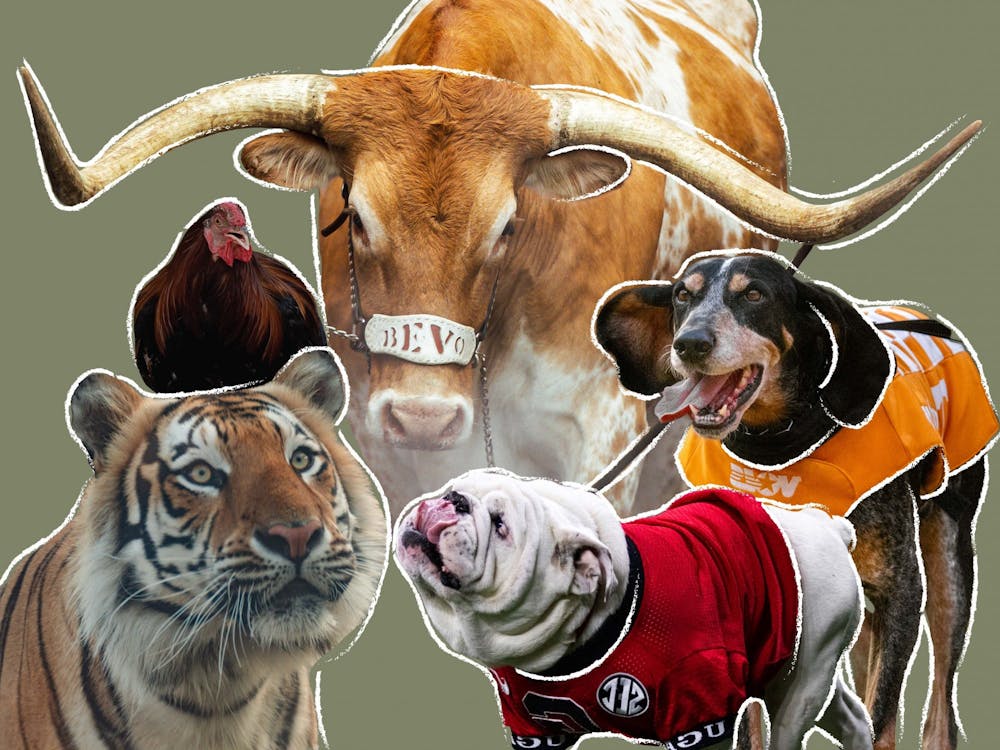Animals of all shapes and sizes have been a tradition of American collegiate sports since 1889. In just the Southeastern Conference (SEC), eight universities have live animals representing their schools, like Georgia's bulldog Uga, Mike the Tiger at Louisiana State University and our very own Sir Big Spur. These renowned pets can be seen at most outdoor sporting events where students and fans have the opportunity to show their support or grab a photo. Even schools with non-animal mascots, like the Tennessee Volunteers, have kept live animals prevalent in their sporting events, i.e. Smokey the Bluetick Hound. Who needs a zoo when you can just attend an SEC Football game?
So, why live animals? How do they differ from traditionally suited mascots? Michael Lewis, a marketing professor at Emory University, told CNN that it’s simply because “humans love animals.” It's more rousing to see an actual living symbol of the mascot than it is to see someone dressed up in a costume running up and down the sidelines (sorry Cocky).

In case you didn't know, Sir Big Spur is the official live mascot of the Gamecocks. The handsome barnyard rooster can be spotted on his display stage at football and baseball games, along with many other UofSC events. Earlier this semester, controversy erupted with a disagreement between the previous and current handlers of the rooster regarding the grooming of his comb, a fleshy crest on top of the bird’s head. A fighting gamecock would typically have their comb trimmed, but clipping this part of their anatomy can cause circulatory issues for the bird. Since Sir Big Spur doesn't fight and only serves as our mascot, the dispute emerged on whether or not to keep up with his brand as a gamecock. At the end of the day, both sets of owners agreed to keep Sir Big Spur’s name, just in time for the first home football game of the 2022 season.
Evidence shows that having these animals harbors a sense of community and draws in a massive amount of revenue, according to a study by Dead Spin. Live animals are entertaining, noticeable and doggone cute. Additionally, from a professional standpoint, live animals provide an alternative method of advertisement and engagement for fans. Eric Nichols, the Deputy Athletics Director at UofSC, says, "In my opinion, the live mascot intends to be another form of representing the brand in a different way. For example, Sir Big Spur represents the never-quit attitude embodied by our student-athletes." UofSC football games are filled with fighting gamecock paraphernalia, such as Cocky, loud rooster crows and the presence of Sir Big Spur, all of which contribute to the lively atmosphere of Williams Brice Stadium. Live mascots induce a level of pride that brings passionate fans to their respective games.
Speaking of passion, thanks to the fervent care of their handlers, these animals typically live in rather superb conditions. Five miles west of UNC's Kenan Memorial Stadium lives Ramses, the Tarheel's live mascot. He lives with goats, other rams and his offspring at Hogan's Magnolia View Farm. His life isn't much different than the typical farm animal's, other than when a UNC football game rolls around. Ramses and other live mascots commonly travel with teams for away games. They often meet other schools' animals, resulting in team acceptance as opposed to the typical rivalry that comes with sports. The respect and care given to these pets make these animals treasured amongst students and fans.

To address the elephant in the room, who has not yet appeared at an SEC game, many don’t realize that having live animals as mascots forces them into a life of service. These critters are expected to be around thousands of people regularly, have their pictures taken and withstand being handled, pet or held, all while acting on their best behavior. While we often spotlight these animals' more prideful moments, that does not mean disaster can’t strike:
During a football game, the University of Texas’s mascot, Bevo the Longhorn Steer, lowered his horns and charged Uga the Bulldog. Bevo managed to use force to break away from the handlers and push through the barricades of his pen, straight at the small bulldog.
Mississippi State’s mascot, Bully the Bulldog, was struck by an Auburn football player during a game in September 2019. While Bully came out of the collision unscathed, many people took to Twitter to voice their concerns.
In 2019, the University of Colorado retired their beloved buffalo mascot, Ralphie V. The decision was made due to safety concerns regarding her running speed and lack of response to her handler’s cues.

According to PETA, most of the controversy lies in exploiting animals that, “don’t belong on college campuses” such as bears and big cats. In the mid-1980s, several individuals conducted a prank in which they cut the locks on LSU’s tiger cage, releasing Mike IV. He wandered around campus before being shot three times with a tranquilizer gun and recaptured. In this situation, the live animal and students were in danger for some time before action was taken. Baylor University has used over fifty live bear cubs as mascots with the school replacing the cubs every two years, according to research by Jessica Baranko at Marquette University. "A place to start would be to eliminate only exotic animals as mascots, but then, it would be difficult to draw a line between domesticated animals, such as dogs and other animals," writes Baranko. Dogs are often overlooked because they are renowned for being domesticated. While cheering on team canines in sold-out football stadiums can be endearing, even a well-trained pup’s fear can, “elicit sudden behavioral and temperament changes such as aggression” according to The Spruce Pets. While there are no recorded instances of dog mascots lashing out, subjecting them to a loud, crowded environment can be overwhelming for the animal.
At the end of the day, tradition is a significant facet of the college experience. Universities have employed live mascots because they receive positive reactions from fans and students alike. Animals big and small, domesticated or not, can be unpredictable. Whether you support live animal mascots or think reform is necessary to retire them, we must recognize the efforts and passion of those who handle these cherished pets. They provide the necessary care and training so that the animals can live fulfilling lives while representing the collegiate sports teams we know and love.
Do you think live animals should continue to represent colleges and universities?



